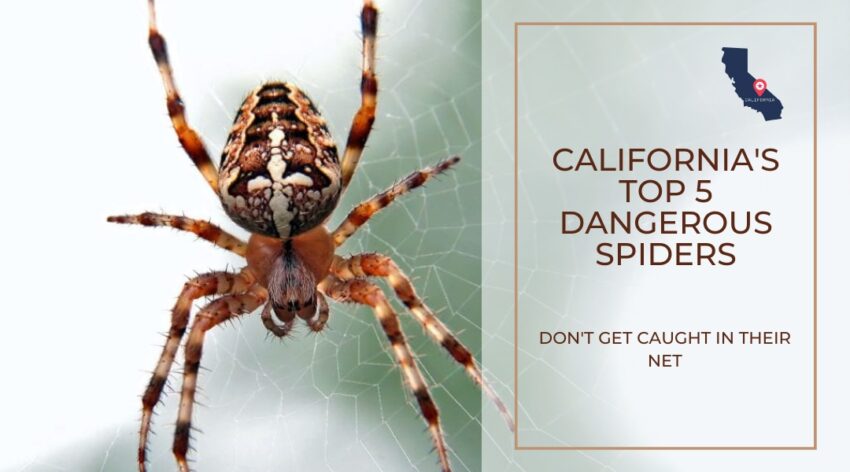California, known for its diverse wildlife and natural beauty, is home to a variety of spiders.
While most spiders are harmless, some species pose a threat to humans due to their venomous bites.
In this blog post, we will explore the most dangerous spiders found in California, their habitats, and the potential impact of their bites on human health.
By understanding the risks associated with these venomous spiders, Californians can better protect themselves and their families from potential harm.
Venomous Spiders in California
Venom is a toxic substance produced by some animals, including certain species of spiders, as a means of self-defense or capturing prey. In venomous spiders, venom is injected through their fangs when they bite. Although the majority of bites are harmless to humans, some venomous spiders found in California can cause serious health complications.
The severity of a bite’s effect on an individual depends on factors such as the type of spider, the amount of venom injected, and the person’s sensitivity to the venom. In this section, we will discuss the role of venom in bites and how it contributes to the danger posed by certain species in California.
These are some of the most dangerous spiders in California:
The Black Widow Spider
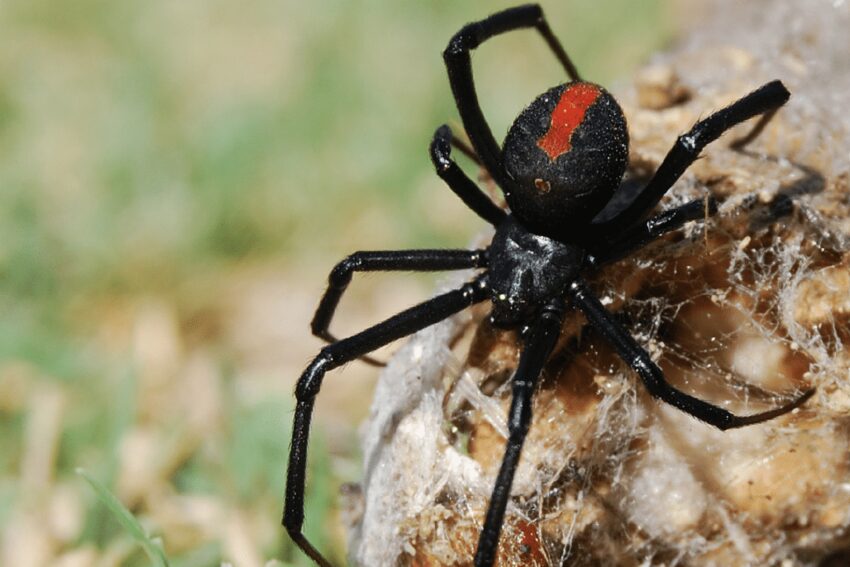
The black widow (Latrodectus spp.) is one of the most infamous and venomous spiders found in California. Recognizable by its shiny black body and red hourglass-shaped marking on its abdomen, the female black widow’s bite can cause severe pain, muscle cramps, and, in rare cases, death.
These spiders are commonly found in dark, undisturbed areas such as woodpiles, sheds, and garages. Black widow venom is a neurotoxin that affects the nervous system, causing symptoms that may include difficulty breathing, nausea, and vomiting. Prompt medical attention is crucial in the event of a black widow bite.
Brown Widow Spider
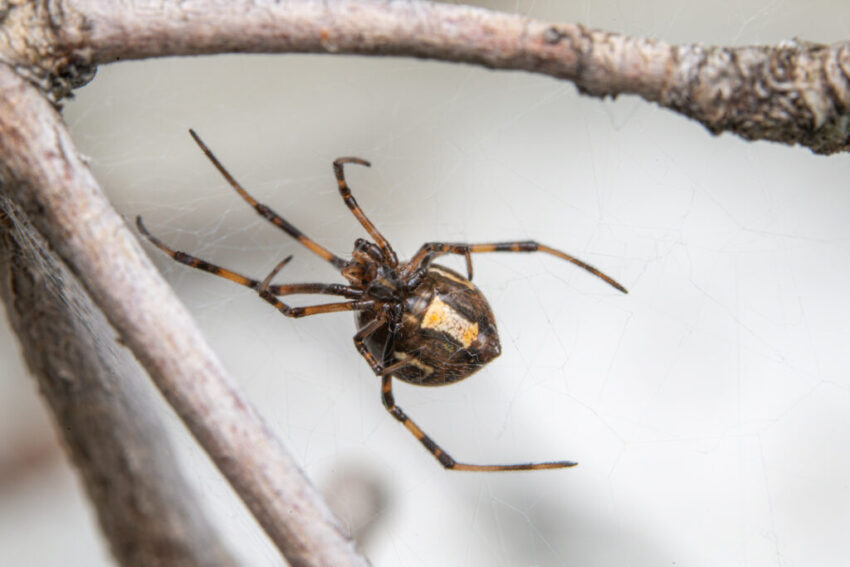
The brown widow (Latrodectus geometricus) is a close relative of the black widow and shares many similarities, including its venomous bite. Brown widow are characterized by their brown coloration, with an orange or yellow hourglass marking on the abdomen.
They are more common in Southern California and are often found in outdoor structures like patio furniture and fences.
While their venom is considered to be more potent than that of the black widow, brown widows typically inject less venom during a bite, resulting in milder symptoms. However, bites from brown widow spiders should still be treated seriously and require medical attention.
Desert Recluse Spider
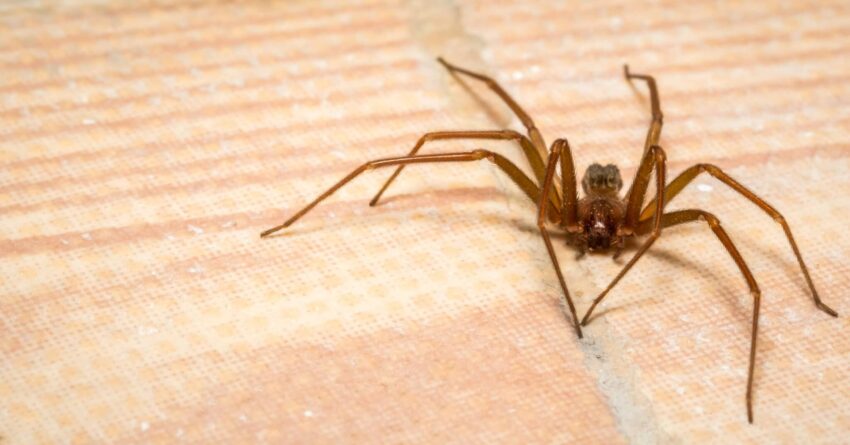
The desert recluse (Loxosceles deserta) is a venomous species native to California’s desert regions. They are typically brown, with a distinctive violin-shaped marking on their cephalothorax (the fused head and thorax).
Desert recluse spiders are nocturnal and prefer hiding in undisturbed areas such as piles of debris or under rocks. Their venom contains a potent toxin that can cause skin necrosis, which can lead to severe tissue damage and disfigurement if left untreated.
Although bites from desert recluse spiders are rare, they can be dangerous and require immediate medical attention.
Hobo Spider
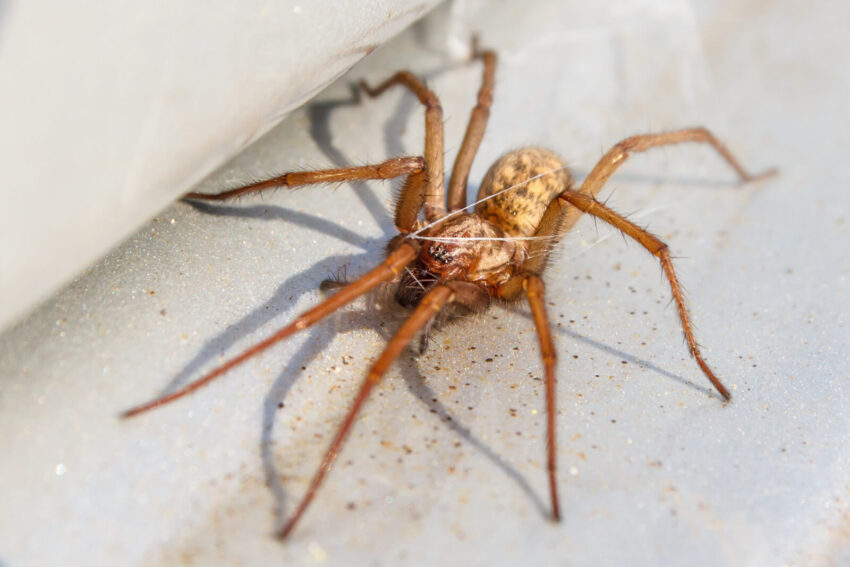
The hobo (Eratigena agrestis) is a venomous spider species that has been found in parts of California, though it is more commonly associated with the Pacific Northwest. Hobo spiders have a brown coloration, with a distinct herringbone pattern on their abdomen.
They are often found in dark, sheltered areas such as basements, crawl spaces, and window wells. While the bite of a hobo spider can cause localized pain, swelling, and redness, there is still debate among experts regarding the severity of its venom on humans.
In any case, if bitten by a hobo spider, it is important to seek medical attention for proper treatment.
Yellow Sac Spider
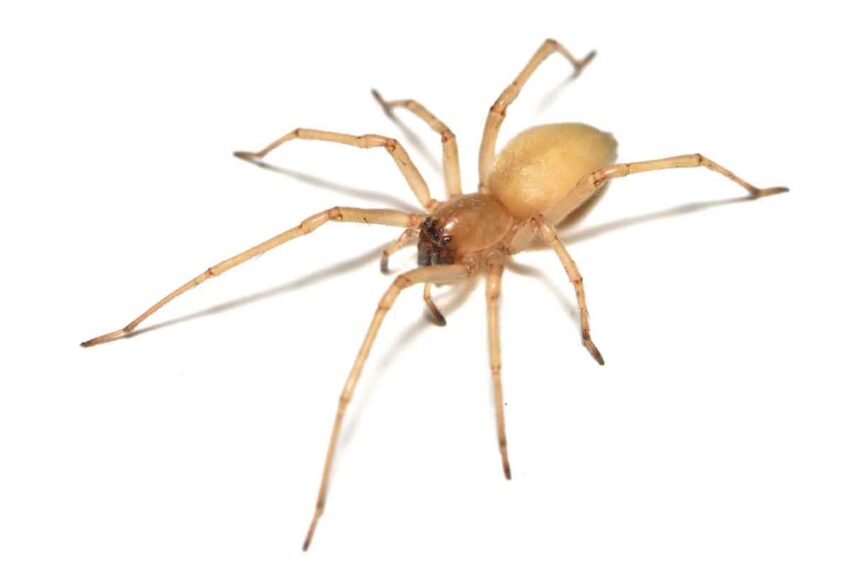
Yellow sac spiders (Cheiracanthium spp.) are small, pale yellow or green spiders that are found throughout California. They are often encountered indoors and can be found in wall corners, behind furniture, and in folded clothing.
Yellow sac bites can cause localized pain, redness, and swelling, sometimes accompanied by itching or burning sensations. While their bites are generally not life-threatening, they can be uncomfortable and should be treated with care.
To avoid encounters with yellow sac spiders, take precautions such as sealing cracks and gaps in your home, regularly cleaning cluttered areas, and shaking out clothing before wearing it.
Tarantulas in California
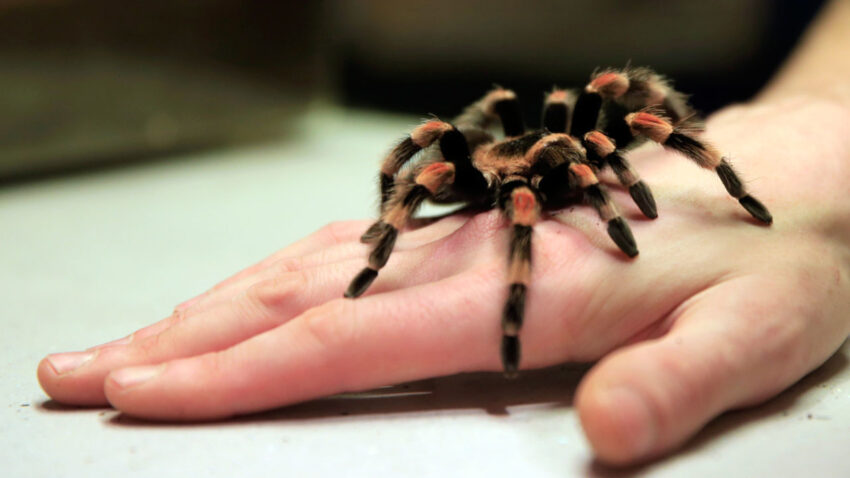
Tarantulas, despite their intimidating size and appearance, are generally not dangerous to humans. California is home to several tarantula species, including the California ebony tarantula (Aphonopelma eutylenum) and the desert blonde tarantula (Aphonopelma chalcodes).
While tarantulas do possess venom, their bites are typically no more painful than a bee sting and are rarely harmful to humans.
In fact, tarantulas are more likely to flee from humans or use their defensive hairs to deter potential threats. Understanding the true nature of these fascinating creatures can help dispel common fears and misconceptions.
The Role of Spiders in California’s Ecosystem
Spiders play a crucial role in California’s ecosystem by helping to control pest populations, such as mosquitoes, flies, and agricultural pests.
As predators, spiders contribute to maintaining a healthy balance in their environments and can even be beneficial to humans by reducing the number of disease-carrying or crop-damaging insects.
By appreciating the ecological importance of spiders, including the venomous species, we can better understand their value and learn to coexist with these essential creatures.
Bite Symptoms
Recognizing the signs of a dangerous bite is crucial for ensuring proper treatment and minimizing potential complications.
Symptoms of a venomous bite may include severe pain, redness, swelling, and in some cases, muscle cramps, difficulty breathing, or nausea.
If you suspect that you or someone you know has been bitten by a venomous spider, it is essential to seek medical attention immediately.
Additionally, try to safely capture or take a clear photograph of the spider, if possible, to help medical professionals identify the species and administer the appropriate treatment.
First Aid and Treatment: Steps to Take if Bitten
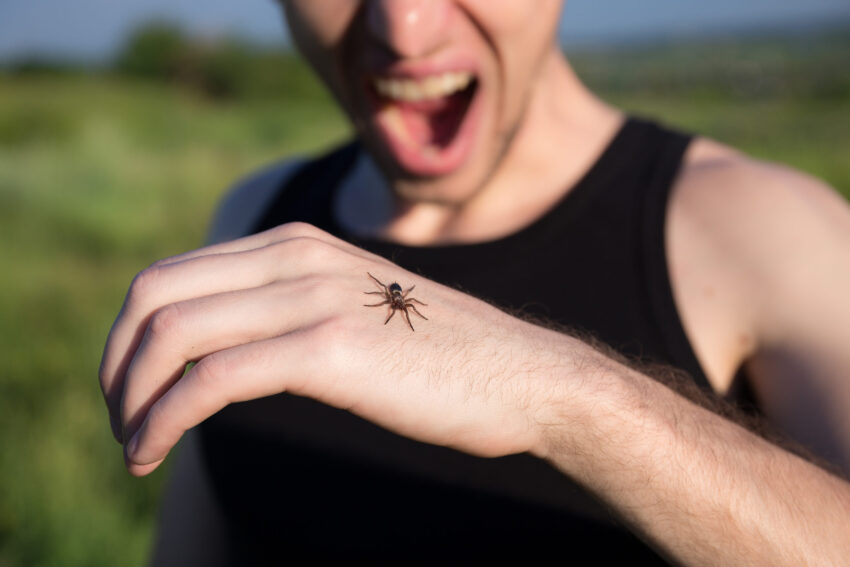
If bitten by a venomous spider, it is important to remain calm and take appropriate first-aid measures while seeking medical attention. Some general first-aid steps for spider bites include:
- Cleaning the bite area with soap and water to reduce the risk of infection.
- Applying a cold pack or ice wrapped in a cloth to the bite site to alleviate pain and swelling.
- Elevating the affected limb, if possible, to help minimize swelling.
- Taking over-the-counter pain relievers, such as acetaminophen or ibuprofen, to manage pain.
- Avoiding tight bandages or tourniquets, as they can worsen the situation.
It is crucial to seek medical attention for any suspected venomous bite, as untreated bites can lead to serious complications. A healthcare professional will assess the bite, provide appropriate treatment, and monitor for any signs of infection or complications.
Prevention Tips: How to Avoid
To minimize the risk of dangerous encounters in California, follow these prevention tips:
- Regularly inspect and clean dark, undisturbed areas of your home, such as closets, basements, and attics.
- Seal cracks and gaps in your home’s foundation, walls, and windows to prevent spiders from entering.
- Wear gloves and long sleeves when handling firewood, debris, or working in areas where spiders may be hiding.
- Keep your home clean and clutter-free to reduce potential hiding spots for spiders.
- Outdoors, be cautious when approaching rock piles, woodpiles, or other potential spider habitats.
Public Health Initiatives
California state agencies, such as the Department of Public Health and local county health departments, actively work to raise awareness about venomous spiders and their potential dangers.
Through educational campaigns, public health alerts, and community outreach programs, these agencies aim to provide residents with the information and resources needed to protect themselves from harmful spider encounters.
Additionally, state agencies collaborate with researchers and experts to monitor and manage venomous spider populations, ensuring that Californians are kept informed about potential threats in their communities.
Spider Myths and Misconceptions
Fear of spiders, also known as arachnophobia, is a common phobia often fueled by misconceptions and myths. By dispelling these myths and learning more about spiders, individuals can overcome their fears and develop a greater appreciation for these fascinating creatures.
Some common myths include the belief that all spiders are dangerous to humans, tarantulas are deadly, and the presence indicates a dirty or unkempt home.
In reality, most are harmless, tarantulas are rarely dangerous to humans, and spiders can be found in both clean and cluttered environments.
Educating oneself about spiders and their true nature can help alleviate unnecessary fear and promote coexistence.
FAQ
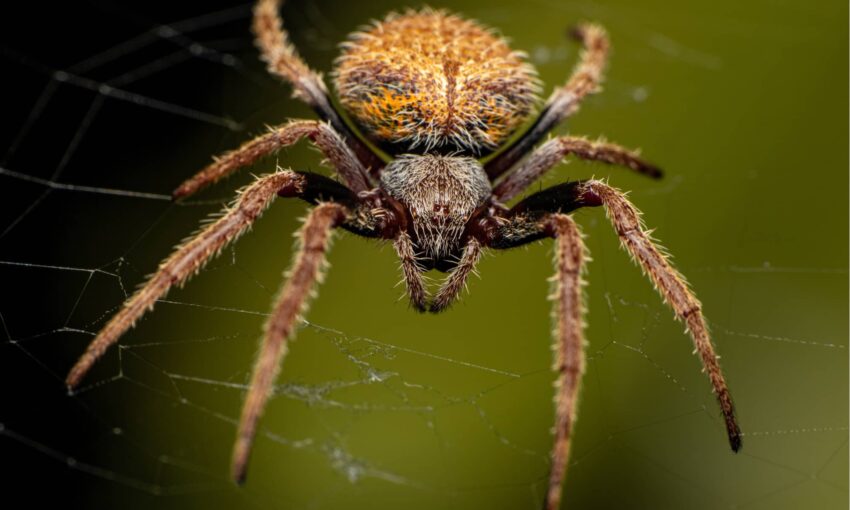
Are there any antivenom treatments available for venomous spider bites?
Yes, antivenom treatments are available for some venomous spider bites, such as those from the black widow spider. The antivenom can help neutralize the venom and alleviate symptoms more rapidly. However, antivenom is typically reserved for severe cases or high-risk patients, such as young children, the elderly, or individuals with underlying health conditions. Medical professionals will determine the necessity of administering antivenom based on the severity of the bite and the patient’s specific circumstances.
Can spiders transmit diseases to humans?
Spiders are not known to transmit diseases to humans like other pests, such as mosquitoes or ticks. While spider bites can lead to localized pain, swelling, and other symptoms, they generally do not spread infectious diseases. However, an untreated spider bite may become infected, leading to complications that require medical attention.
How can I safely capture or photograph a spider to help with identification in case of a bite?
If you need to capture or photograph a spider for identification purposes, use caution to avoid getting bitten. You can use a jar or a glass and a piece of paper or cardboard to safely trap the spider. Gently coax the spider onto the paper or cardboard, and then carefully slide the jar or glass over the spider, trapping it.
If possible, take a clear, close-up photograph of the spider without risking your safety. Provide the photograph or the trapped spider to medical professionals for identification and proper treatment.
Are pets at risk of venomous spider bites in California?
Pets, such as dogs and cats, can also be at risk of venomous spider bites in California. The severity of a bite may vary depending on the spider species, the location of the bite, and the size and health of the pet. If you suspect that your pet has been bitten by a venomous spider, contact your veterinarian immediately for advice and treatment.
How can I identify a spider’s web to avoid potential encounters?
Spider webs can vary in size, shape, and structure, depending on the species. For example, black widow spiders create irregular, tangled webs, often found in dark, sheltered areas.
Familiarizing yourself with the web structures of dangerous spider species in California can help you recognize potential habitats and avoid encounters. If you come across an unfamiliar web, it is best to exercise caution and give the area a wide berth to minimize the risk of contact with venomous spiders.
Conclusion
Although the majority of spiders in California are harmless, it is essential to understand the risks associated with venomous species and take appropriate precautions to protect oneself and loved ones. By recognizing the signs of a dangerous bite, seeking prompt medical attention, and following prevention tips, Californians can minimize potential harm and maintain a healthy coexistence with these integral members of

